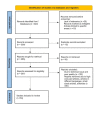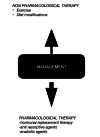A Comprehensive Review on Postmenopausal Osteoporosis in Women
- PMID: 38090417
- PMCID: PMC10711335
- DOI: 10.7759/cureus.48582
A Comprehensive Review on Postmenopausal Osteoporosis in Women
Abstract
In India, a sizeable share of the female population is in the postmenopausal or perimenopausal stage. Issues related to aging in women are an increased risk of broken bones, a decrease in cortical and cancellous bone thickness, and a decrease in bone mineral density (BMD). Osteoporosis has a severely detrimental effect on the life of women, lowering their standard of living, decreasing the quality of their lives, and increasing their likelihood of fractures. It can be terrible if the fracture affects the hip or the spine since it could leave you immobile. Postmenopausal osteoporosis is related to lack of estrogen and lack of eggs produced by ovaries seen with increasing age. After many years of study, the role of estrogen is now well established in bone remodelling. Estrogen contributes to the resorption and strengthening of bone. It detects less density of bone at specific site and helps in strengthening the bone at that location. Treatment choices are based on severity, rate of advancement, and individual patient-specific characteristics. By adopting a lifecycle approach, all women should be educated about this illness and inspired to adopt a healthy lifestyle that includes regular exercise and a balanced diet. All premenopausal women should be advised to take vitamin D and calcium supplements regardless of whether or not they have any bone defects. Smoking and alcohol consumption should also be restricted. Pharmacological intervention is carried out on patients diagnosed with the disease. Drugs should be chosen based on their side effects and contradictions. It's crucial to do follow-up, and patient compliance should be closely observed. This article raises awareness of this widespread illness and helps women of postmenopausal age take the required precautions to stop bone thinning and manage its progress; moreover, it also reviews the literature already published on it.
Keywords: bone; lifestyle; management; osteoporosis; postmenopause.
Copyright © 2023, Charde et al.
Conflict of interest statement
The authors have declared that no competing interests exist.
Figures
References
-
- Osteoporosis in men. Vilaca T, Eastell R, Schini M. Lancet Diabetes Endocrinol. 2022;10:273–283. - PubMed
Publication types
LinkOut - more resources
Full Text Sources


